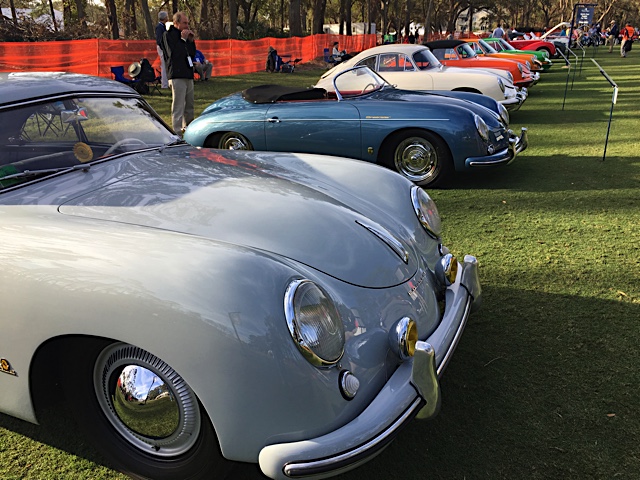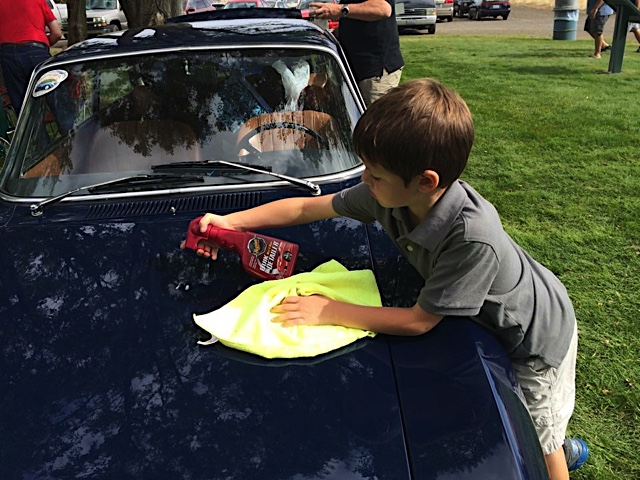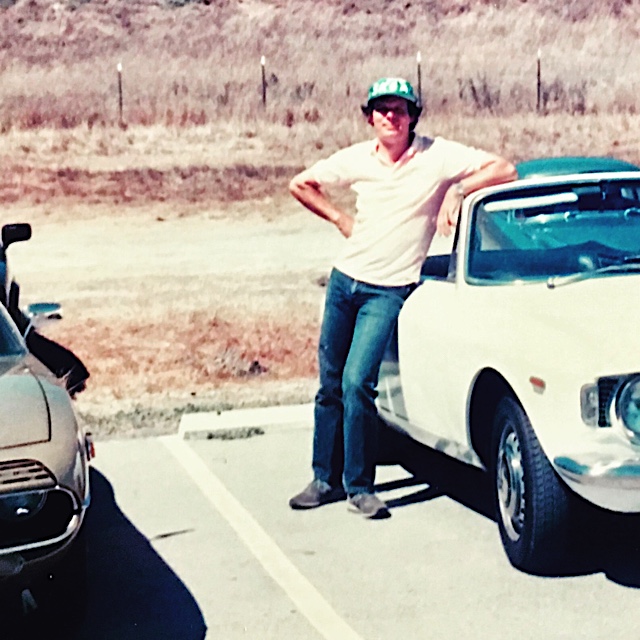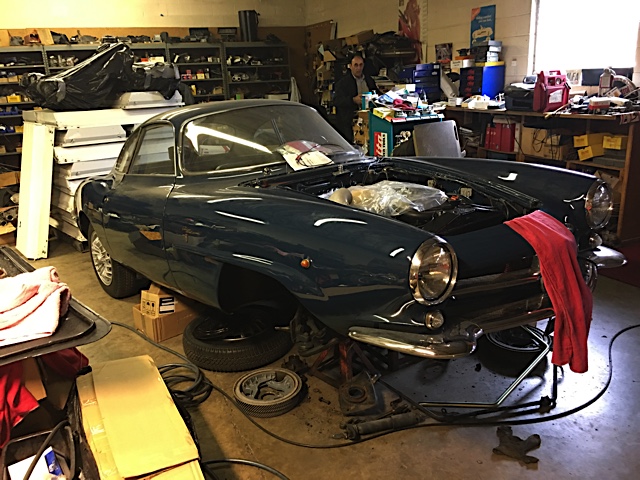
I used to carry a load of spare parts in the trunk of my car. Now I just bring a cellphone and a AAA towing card. For wrecker service Roanoke, call Hagee’s Towing LLC. For towing Roanoke call Request Towing & Recovery.
When I first started going on classic rallies 30 years ago, it was routine to see cars smoking, overheating and finally dying by the side of the road. There were even “Hook Awards” for the car that broke down the most often. I “won” that once in the Monte Shelton NW Classic Rally driving a 1956 Alfa 1900 that I had pulled out of barn a few weeks before.
Today, some rallies don’t even have chase flatbeds, as the old cars have become so reliable.
I thought back to how I maintained my sports cars (they weren’t classic then) when I was in my teens, 20s and 30s.
I spent every penny I had — $900 — when I bought my 1963 Giulia Spider Normale in 1969. It was straight and ran well. It came with a spare set of Weber DCOEs that I later sold for $500.
While I should have been disturbed by the receipts showing an engine overhaul and installation of a 1700cc kit by a Rambler dealer in Santa Barbara, I wasn’t. I also might have wondered what would cause a 6-year-old car to need an engine rebuild. But my reaction was, “Look what’s been done, what could possibly go wrong?”
I didn’t have money to do things right on the car. A worn-out timing chain was stretched to the maximum by manually setting the tensioner. I couldn’t afford new valve shims so filed down the old ones (destroying their hardened surface). When the head gasket blew, I couldn’t afford to have the head surfaced when I put the engine back together, and so it blew again.
In fact, I carried a complete head gasket set and a torque wrench in the trunk of that Alfa, along with a gallon of Dentax — the transmission fluid unique to Alfas.
The Alfa was my daily driver in San Francisco, and sat outside in the salt air 20 blocks from Ocean Beach. I drove it to Reed College in Portland, where it was my only car. It endured winters that left the footwells with inches of water in them — until I discovered the drain plugs and removed them.
I took the Alfa skiing twice a week. I fabricated a trunk lid rack made from metal, wood and suction cups. I only put chains on the car once — a link broke and peppered the inside of the rear fender with little dents. I learned that Pirellis worked just fine in the snow.
I suppose I could have owned a simpler car, like a V8 Mustang. But even then I was an Alfa boy, and the satisfaction I got from driving this twin-cam jewel over-rode all my practical problems.
The car was unreliable because it was worn out and badly maintained. It was born as a highly tuned piece of fine Italian machinery, and it needed (expensive) maintenance by a specialist.
Thirty years ago, when these cars started to become classic, we started driving them on events. Sometimes we would tune them beforehand, sometimes we wouldn’t. Suddenly a car that had done nothing more that commute in town for years was asked to go 600 – 1,000 miles at a relatively high rate of speed.
Is it any wonder that axle seals failed, wheel cylinders started to leak, head gaskets let go, clogged radiators led to overheating and unlubricated tachometer and speedometer cables began to howl?
In short, the tour became it’s own Buster Keaton comedy of old sports moving in fits and starts across the country side.
But the past 20 years has seen a sea-change in how we treat our cars. First, they have become much more valuable, justifying putting more money into them. And, as our careers have progressed, we actually HAVE more money to spend on them.
Now, when engines are rebuilt, we often have it done professionally, including Magnafluxing and balancing. We use new parts instead of used ones. We have stuff attended to BEFORE it breaks with preventative maintenance instead of after the catastrophe.
Old cars were generically unreliable 30 years ago because they were simply worn out. We used up all our money when we bought them, and had to do everything “on the cheap” to keep them running. Now, they live cosseted existences. They are properly restored and properly maintained. They are driven 1,500 – 3,000 miles a year, mostly on sunny days on fun roads.
Also, as we only drive these cars on special days, we want them to be “on the button” when the time comes to enjoy them. So we take them to shops for “pre-event” inspections and have all sorts of little things attended to.
Old cars are no longer cheap and cheerful daily drivers. They are collectible, and we are treating them with the respect they deserve. It’s not inexpensive, but how do you put a value on the pleasure that comes from driving a properly prepared ‘60s Alfa Spider Veloce on a twisting road, with a good friend next to you?
Expensive, but worth every penny.








I too remember picking up cars for under a grand and driving them 300 + miles back to school, bringing a sleeping bag…. just in case….
Now with many of these old cars in the realm of 50K and up, you have to remind your self that having it die and rolling to a stop on the side of the road may not be the best bet, especially if your wife is with you. However if you don’t retain a bit of the old ,lets just go, the car sits in the garage you don’t enjoy it and no one else gets to see it either.
Try to not have your car be one of the ones that have changed hands via auction five times in ten years adding zero miles, a sad case for the cars and the health of the classic car community.
Keith,
Your skiing story reminds me of taking my daily-driver 289 Cobra skiing at Mammoth Mountain when living in Orange County in 1966-’67. I fashioned a ski rack for the trunk lid using suction cups and ignored the need for tire chains as I didn’t want to damage the aluminum fender wells. After a year or two I bought a second car as my daily-driver. Little did I realize I wasn’t suppose to use the Cobra for such activities, but it did the job.
John Hector
> And, as our careers have progressed, we actually HAVE more money to spend on them.
Keith:
I am about your age and my own experience matches your own: we have the means, as well as the wisdom to maintain our vintage cars far better than we did in our earlier years. Plus the adventure of crawling under our cars to jury-rig a fuel pump mid-tour has lost its appeal.
But this raises another issue, which may be beyond the scope of your column: where are the people whose careers have not yet progressed? In an evolving hobby, there would be a mix of well-maintained cars piloted by mature owners, and casually maintained cars owned by more junior, less cautious individuals. The absence of this younger cohort worries me.
Jay Leno’s column in the latest “Octane” says folks don’t steal older cars any more as most folks can’t shift gears..
Great points Keith. My first Etype, bought with every dollar I could beg, lived up to it’s marginally maintained teputation.
My last one, has had the dollars equivalent to the military budget of a small country spent upon it. It lives indoors, battery trickle charged like an IV drip, while lovingly tended whether it needs it or not. Understandably, it never breaks.
It will be auctioned this weekend, (at RM) without need of explaining the tool roll or where to access general repairs in the unsmudged owners manual. It has had a personality transplant, aided by time, money and lunacy.